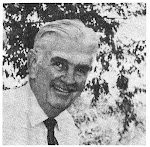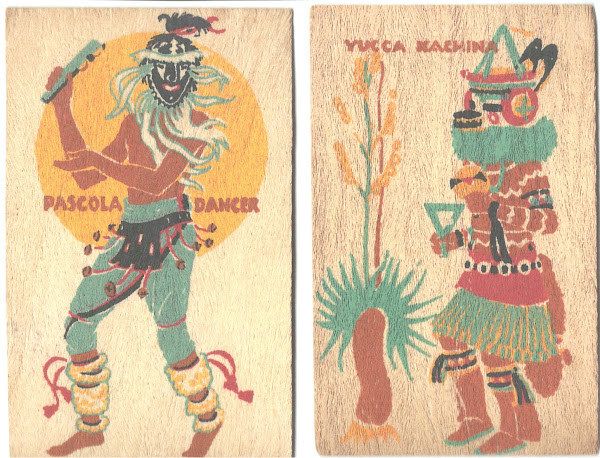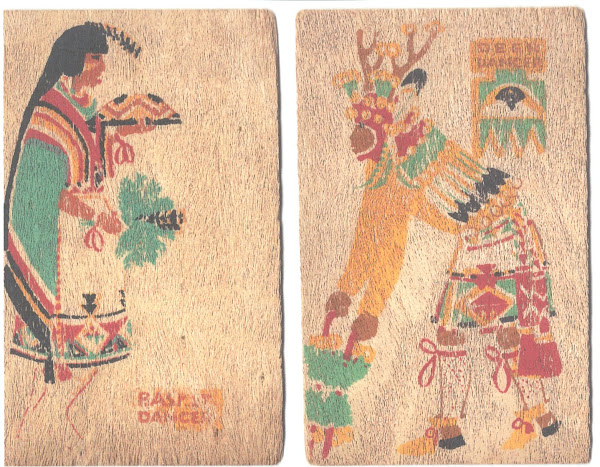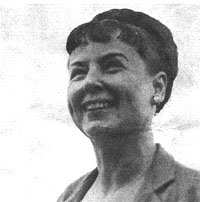I believe Holling and Lucille have become immortal. That is, they’re people who live on long after their mortal remains are gone.
I received an e-mail this week from a woman who had read this blog and had some of the postcards illustrated by Lucille Webster Holling in 1941. Are they valuable as archival material? Perhaps not, but they complete the art and ephemera that the Hollings produced. More importantly, she asked me to put her in touch with Joan Hoffman at the museum so she could donate them to the museum. It might be helpful here to mention again that Joan Hoffman manages the wonderful little Leslie Area Historical Museum in Holling’s hometown at 107 E. Bellevue Rd., P.O. Box 275. Leslie, Mich., 49251; tel. 517-589-5220.
Another letter also arrived, reminding me of the fundamental value in their writing, illustration and love of the earth. The writer said, “I read Brad Fisher's article and the ending got me thinking more. I, too, have wondered about how the current generation is going to deal with the Holling's Houghton Mifflin series of books. I haven't been with enough young people to know. I see my five-year-old grandson looking at books. Many of them have sound and pages are turned with the movement of the child's finger. There are hundreds of children's books. Certainly it is a different time for children. Children also watch many fast-moving videos and shows.
“I would think that it probably depends on how the Holling books are presented and the child's experiences. Our grandson spends a lot of time outdoors when he is here. Many children don't that opportunity. We live on 43 acres with fields, pond, foot bridge over a creek, and woods. He watches wildlife, digs in the dirt and asks many questions. I think he will be able to relate to the Holling books when he is a little older. (I'll be very disappointed if he doesn't.)
“The Holling books have a beauty of their own in words and illustrations so I sure hope they don't get lost in today's technology, our hurried pace and lack of contact with nature.”
My thanks to these two benefactors who are keeping the Hollings alive in the face of a world that sometimes moves too fast and too impersonally.
Friday, August 30, 2013
Friday, August 16, 2013
Holling and the Caldecott at 75
It can be intimidating to run your fingers over the spines of books on a bookstore shelf, trying to pick the most suitable purchase for a child. One seal of approval, however, is the gold foil medallion signifying a particular title is a winner of the Caldecott Award.
This year marks the 75th anniversary of the prize created during the Great Depression. Like the Newbery Medal, created 15 years earlier and awarded by the American Library Association, the Caldecott is an indication of a “safe investment” for book buyers. The Caldecott is awarded by the Association of Library Service to Children to a winner and honorable mentions for the most distinguished contribution by an artist who is an American citizen or resident. The ALSC is a division of the ALA.
In 1942, as America entered uncertain times and became embroiled in war, Holling Clancy Holling was honored for his Paddle-to-the-Sea, published by Houghton Mifflin. The winner that year was Make Way for Ducklings by Robert McCloskey. Also receiving Honor prizes that year were An American ABC by Maud and Miska Petersham, In My Mother’s House by Ann Nolan Clark (author) and Velino Herrera (illustrator), and Nothing at All by Wanda Gág. (For older readers of this blog, let me ask how many of the 1942 Caldecott winners have you read?)
The medal is named for Randolph Caldecott, one of three influential children's illustrators working in England in the 19th century. The other two were Kate Greenaway and Walter Crane. The artwork is taken from Caldecott's illustrations for The Diverting Story of John Gilpin, which exemplifies his humor, vitality and sense of movement. The illustration shows John Gilpin astride a runaway horse, accompanied by squawking geese, braying dogs and startled onlookers.
Seventy-five years later, the Caldecott Medal is still an assurance of excellence in illustration.
 |
| The Caldecott Medal and Randolph Caldecott |
This year marks the 75th anniversary of the prize created during the Great Depression. Like the Newbery Medal, created 15 years earlier and awarded by the American Library Association, the Caldecott is an indication of a “safe investment” for book buyers. The Caldecott is awarded by the Association of Library Service to Children to a winner and honorable mentions for the most distinguished contribution by an artist who is an American citizen or resident. The ALSC is a division of the ALA.
In 1942, as America entered uncertain times and became embroiled in war, Holling Clancy Holling was honored for his Paddle-to-the-Sea, published by Houghton Mifflin. The winner that year was Make Way for Ducklings by Robert McCloskey. Also receiving Honor prizes that year were An American ABC by Maud and Miska Petersham, In My Mother’s House by Ann Nolan Clark (author) and Velino Herrera (illustrator), and Nothing at All by Wanda Gág. (For older readers of this blog, let me ask how many of the 1942 Caldecott winners have you read?)
The medal is named for Randolph Caldecott, one of three influential children's illustrators working in England in the 19th century. The other two were Kate Greenaway and Walter Crane. The artwork is taken from Caldecott's illustrations for The Diverting Story of John Gilpin, which exemplifies his humor, vitality and sense of movement. The illustration shows John Gilpin astride a runaway horse, accompanied by squawking geese, braying dogs and startled onlookers.
Seventy-five years later, the Caldecott Medal is still an assurance of excellence in illustration.
Subscribe to:
Posts (Atom)








